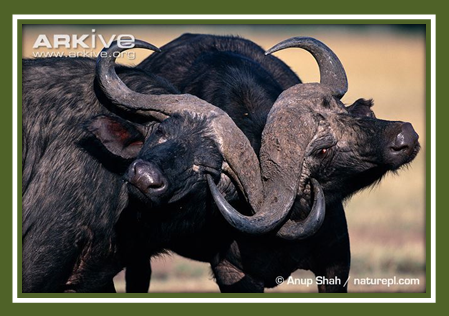News
Latest Lion Aid News
The Tanzanian Association of Tour Operators comes out against trophy hunting
Tuesday 4th March 2014
|
It’s a tussle In recent newspaper reports, the Chairman of the Tanzanian Association of Tour Operators (TATO) said that the negative impacts of trophy hunting outweigh its return, demanding the business be banned as concrete step to combat poaching. TATO Chairman Willy Chambulo argued that it defeats common sense to continue carrying on trophy hunting in the face of a crisis that is “screaming” towards the ultimate extinction of Tanzania’s big five animals at the expense of tourism. Hunting income numbers could well be highly inflated. Alexander Songorwa, the recently sacked director of wildlife, is credited with the $75 million figure from 2008-2011. From CITES export records during that four year period, trophy hunters shot a total of 466 elephants in Tanzania. The trophy fees paid depend on the weight of the tusks - for instance, the fees in 2012 were $7,500 for tusks of 15 to 27 kg, $12,000 for 27-32 kg, and $20,000 for ivory over 32 kg. That means elephant trophy fees would have brought in an average of $6,407,500 for those four years at 2012 rates. During the same time period, Tanzania exported 465 lion trophies. The trophy fees varied during that time, but let’s take the fees now applicable of $12,000 per lion (it was $4,900 in 2008). That would add a total of $5,580,000. There are a large number of hunting concessions in Tanzania, but diminishing as wildlife is depleted. These concessions also pay annual fees – let’s estimate 156 concessions at varying concession rates during the four years to deliver a total of $9,160,000 (maximum concession price was $27,000 per year). Then there are perhaps a number of other fees and other species trophy fees, but overall, can they make up the deficit of over $53.8 million on Songorwa’s $75 million number? It just does not seem to add up. Tanzania’s rural communities earn a pittance from trophy hunting – the hunting companies are only required to pay communities $4 per square kilometre per year for hunting on their land. Perhaps the Tanzania Professional Hunters Association (TPHA) could cast some light. They seem angered by TATO’s proposals, and now demand tour operators to be taxed heavily to raise funds required to equip anti-poaching squads. The TPHA thus proposes an increase to $250 from the current $60 daily entry fee per person to the Serengeti National Park and other steep fee increases for other areas. TATO seems to be holding the high ground in terms of relative income of photographic tourism versus trophy hunting (even though Tanzania has set aside 250,000km2 exclusively for trophy hunting purposes). TATO has also pointed out that the Selous Game Reserve, an area largely dedicated to hunting concessions, has seen a decline in elephants from about 39,000 in 2009, to about 13,000 today. This would seem to negate claims that hunting companies are highly effective in anti-poaching activities as claimed. Trophy hunting numbers are also in a state of great decline. For example, in 2002 Tanzania exported 228 lion trophies. In 2011 this had declined to 55 – perhaps because of years of overhunting in the concessions. One report indicates that neighbouring concessions even “poach” lions from each other as well as engaging in other excesses (http://www.africahunting.com/content/2-hunting-tanzania-384/). Overall, Tanzania needs to take a long, hard look on how to improve her record of wildlife conservation. After the shock of finding out the extent to which Tanzania’s elephant populations have declined due to rampant poaching, the wildlife authorities need to take stock of other species as well. Counts need to be conducted for commercially important species and until those are completed, there should be a trophy hunting moratorium imposed. The hunting industry and the photographic tourism industry both need to be better regulated. Photographic tourist organizations need to ensure they contribute better to the costs of maintaining Tanzania’s wildlife. For the last ten years at least calls have been made for better self-regulation in the hunting industry but these have not been met with substantive changes (http://www.wildlife-baldus.com/download/influence_of_corruption_on_hunting.pdf). Tanzania also needs to ensure that government funds derived from wildlife income are properly allocated to wildlife conservation. The Tanzanian government is entrusted with stewardship of wildlife resources for future generations. It is time for positive changes that will ensure this trust is met. Picture credit: www.arkive.org If you have not already signed up to our mailing list, you can add your name here and keep up to date with our ongoing work and, most importantly, DONATE to support our work to conserve the remaining fragile lion populations. Thank you. Categories: Events/Fundraising, Trophy Hunting, Extinction, Domesticating Animals |
Posted by Chris Macsween at 13:51
No comments have been posted yet.
Add a new comment
Existing user
New user sign up




